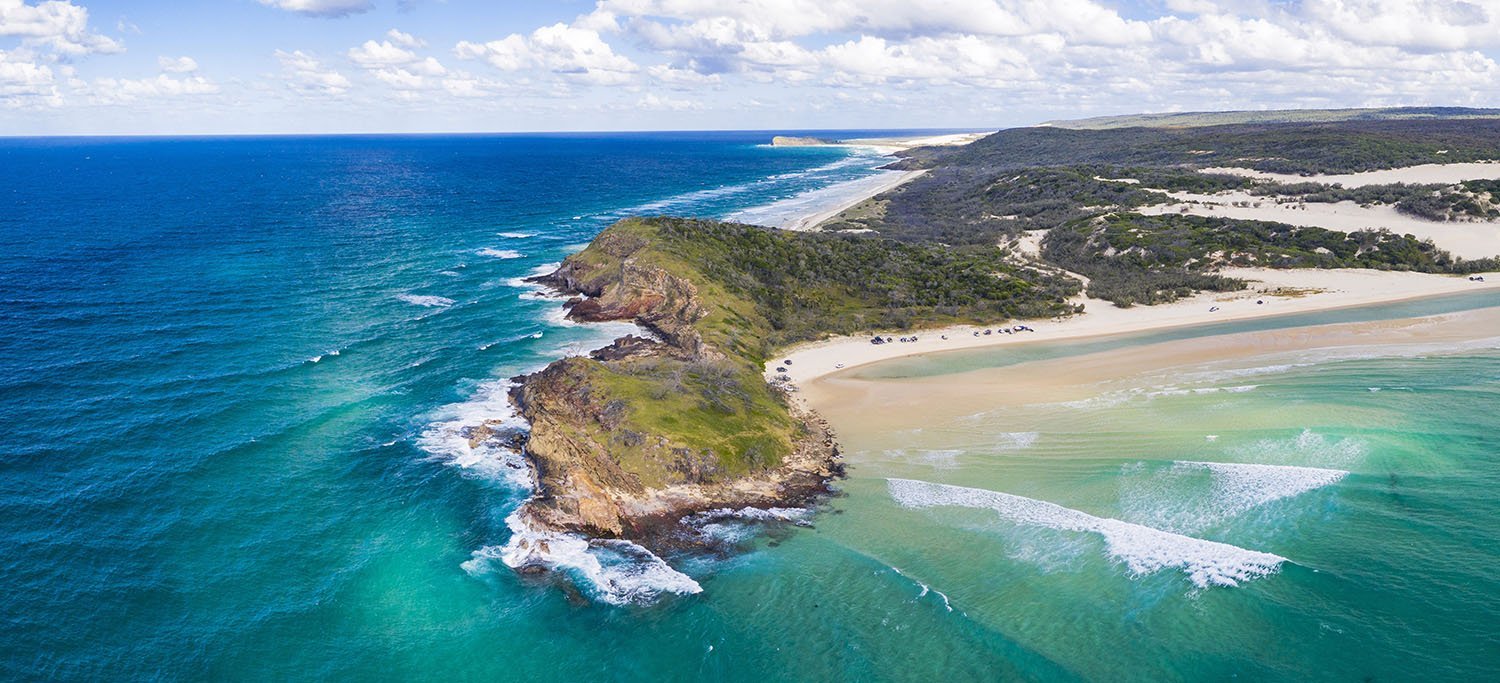This time last weekend I was on Fraser Island.

Meaning it is very hard for me to be sitting at my desk, writing, not daydreaming about clear freshwater lakes and pristine sandy creeks with the sound of the ocean 24/7.
Oh look at that bird sitting on my pool fence.
Focus…
Like any good tip away, it was too short. I loved the family time and memories created that only you and the people with you have; it was great.
Un-like me, I didn’t spend any time thinking about work or property or market cycles.
Very much a break indeed then!
However, I did look up some facts about the island and its current occupants.
All 182 of them.
Yep, on the world’s largest sand island, there is only 182 permanent residents.
Most astonishing is the amount of people who visit each year, upwards of 400,000.
A massive 184,000 hectares (454,000 acres) of nature to enjoy and 182 residents.
Sounds lovely but what does this have to do with Property?
0.02%
Yep, 0.02%
That is how much of the island is available to build on / own.
An exceptionally small amount, and rightly so. It should be kept beautiful, forever.
It also serves to demonstrate a specific point about land.
At some point a decision was made to allow only 37 hectares (91 acres) available for freehold use.
The governing body has zoned a small area, usable, when a massive amount of land is available. (again, I don’t want it built on, just work with me here)
Land is a scarce commodity on the worlds largest sand island.
There is no shortage of land, just a shortage of build-able land.
Look around and you see land everywhere, while on the beach or at the lakes, nothing can be built on.
This is an example of manufactured land supply.
An area/suburb may have a large amount of land, there may only be a small amount of usable or available land.
This puts extreme pressure on the price of land.
The reverse is true as well. An area/suburb that has lots of usable / developed land, means that prices are not under pressure.
The Island example shows that a governing body has the power to create extremes in land prices through zoning.
The same is true through services and infrastructure.
Someone, somewhere draws a line on a page and next thing you know, your house is in a school zone and the one across the road is not.
Value changes because of a pencil.
Train stations, bridges, roads, services, child care, shops and schools. Anything that is appealing creates value.
Zoning, conservation, floods, farms and national parks create scarcity in areas of massive land holdings
The trick is to know where to buy to capitalise on it.
The best way is to have inside government and planning contacts.
For the rest of us non-corrupt people (anybody reading this who is not a politician), market insight and monitoring of information has to suffice.
I am very glad only 0.02% of Fraser island, is available for freehold. I also like its old new name (or is that, new old name) K’gari.
Most of all, I like being about 2 hours away from somewhere so beautiful and well kept.
Zoning and restrictions have worked well in this instance, for the benefit of the island. That outcome is not always a consistent one.
They have also created land supply pressure on prices.
That outcome is always consistent…
Since 2004, Scotty North has been helping people buy the best properties for their needs at prices that simply speak for themselves.
Scotty has been instrumental in bridging the gap between financial planning and traditional real estate transactions through his property advice model.
Scotty North is a Qualified Property Investment Advisor (QPIA), with accreditation’s in financial planning, mortgage broking and real estate.
By carefully considering his clients’ goals and planning for market changes via demographics and trends, Scotty designs a future proof outcome not only specific to the client’s needs but dynamic in its execution with performance indicators and exit strategies built in.

